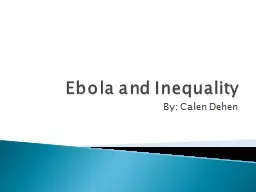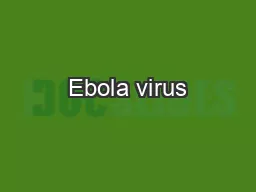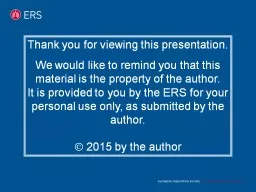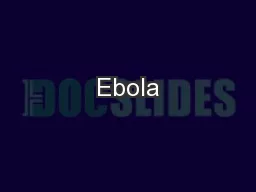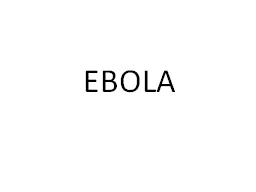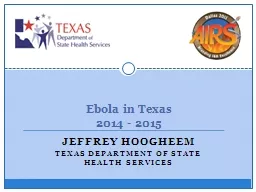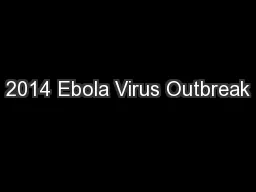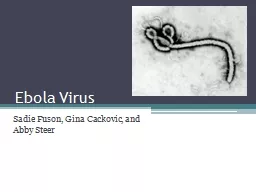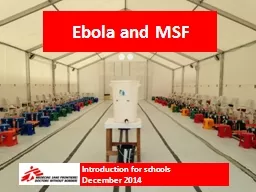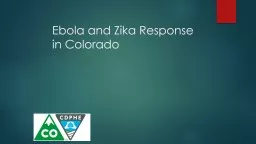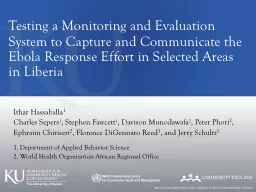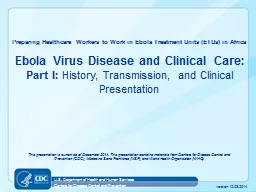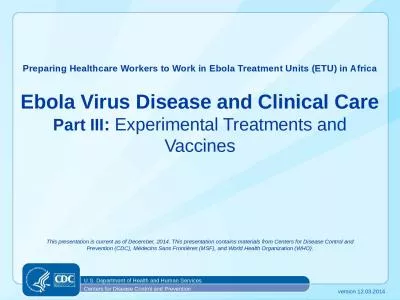PPT-Ebola and Inequality
Author : cheryl-pisano | Published Date : 2016-04-08
By Calen Dehen Ebola is a hemorrhagic fever of the filovirus family with a 5090 fatality rate There is no effective treatment for Ebola except for the euphemistically
Presentation Embed Code
Download Presentation
Download Presentation The PPT/PDF document "Ebola and Inequality" is the property of its rightful owner. Permission is granted to download and print the materials on this website for personal, non-commercial use only, and to display it on your personal computer provided you do not modify the materials and that you retain all copyright notices contained in the materials. By downloading content from our website, you accept the terms of this agreement.
Ebola and Inequality: Transcript
By Calen Dehen Ebola is a hemorrhagic fever of the filovirus family with a 5090 fatality rate There is no effective treatment for Ebola except for the euphemistically labeled supportive therapy The virus is spread through contact with infected fluids typically blood and once it has infected a new patient it rapidly attacks the internal organs and connective tissue causes severe bleeding vomiting aches mental impairments and dementia and in severe cases grand mal seizures The typical cause of death is multiorgan system failure Jones 2011 . What specific skills does CDCs Ebola Response Team bring The ability to provide expert consultation on the following Safe and immediate isolation and coordination of laboratory testing for a person with suspected Ebola virus infection Specialized ho . Conakry, . January. 1st – . February. 12th . 2015. Dominique Jeannel. 1,2. , Laurel Delayo-Zomahoun. 1. , Emmanuel Heleze. 1. , . Mariame. Bah-Kante. 3. , . Cyrille. G. Diffo. 1. , André K. Missombo. The Ebola virus causes an acute, serious illness which is often fatal if untreated. . The most severely affected countries are: Guinea, Sierra Leone and Liberia. These country have very weak health systems, lacking human and infrastructural resources.. Pandemics and Emerging Infections. Sarah Gilbert, Jenner Institute, University of Oxford. THE JENNER INSTITUTE. a partnership between Oxford University and . the . Pirbright. Institute . - Developing innovative vaccines. Virus . Disease: treatment, gaps and options. Ellis Owusu-Dabo . (BSc, MB ChB. , MSc, PhD, MWACP, FGCP) . Director, . KCCR/KNUST, Kumasi. , . Ghana . www.kccr-ghana.org. . Established in . October 1997. Where did they get it?. How do you get the virus? . The EBOLA Health Commissioner. The EBOLA Health Commissioner . Understand science of disease and its transmission. Interrupt the transmission of the virus. Jeffrey Hoogheem. Texas Department of State Health Services. Introduction. The 2014 Ebola incident was historic and unlike anything we have faced before. Many of the challenges were not unique to Dallas or the state of Texas. What is a Virus?. Viruses are microscopic particles (10 – 400 nm).. Viruses are made of genetic material (DNA or RNA) surrounded by a protein coating and sometimes an outer layer containing lipids.. Type of Disease:. The . Ebola virus is classified under the Filovirus family. . There . are also four types of the Ebola virus: Ebola-Zaire, Ebola-Sudan, Ebola-Ivory Coast(Tai), and Ebola-Reston.. Description of Disease:. December 2014. Ebola . epidemics. “MSF has been working in ‘Ebola settings’ for almost 20 years, so we have an enormous amount of knowledge on safe behaviour, infection control and patient management.” - . Ebola is a hemorrhagic fever that can cause disease in humans and nonhuman primates (monkeys, gorillas, and chimpanzees). Ebola is spread through direct contact (through broken skin or unprotected mucous membranes) with:. Ithar . Hassaballa. 1. . Charles Sepers. 1. , Stephen Fawcett. 1. , Davison Munodawafa. 2. , Peter Phori. 2. , Ephraim Chiriseri. 2. , Florence . DiGennaro. Reed. 1. , and Jerry Schultz. 1. 1. Department . Part I: . History, Transmission, and Clinical Presentation. U.S. Department of Health and Human Services. Centers for Disease Control and Prevention. This presentation is current . as of . December . Clinical Care. Part III. : . Experimental Treatments and Vaccines. U.S. Department of Health and Human Services. Centers for Disease Control and Prevention. This presentation is current . as of December, 2014. This .
Download Document
Here is the link to download the presentation.
"Ebola and Inequality"The content belongs to its owner. You may download and print it for personal use, without modification, and keep all copyright notices. By downloading, you agree to these terms.
Related Documents

